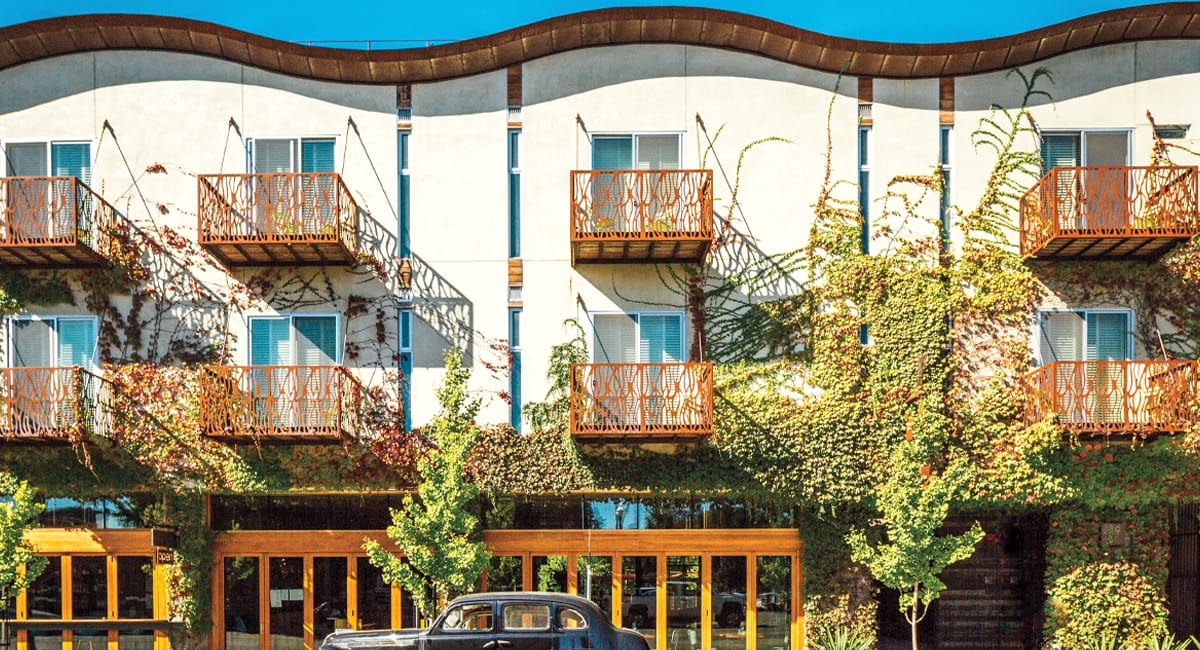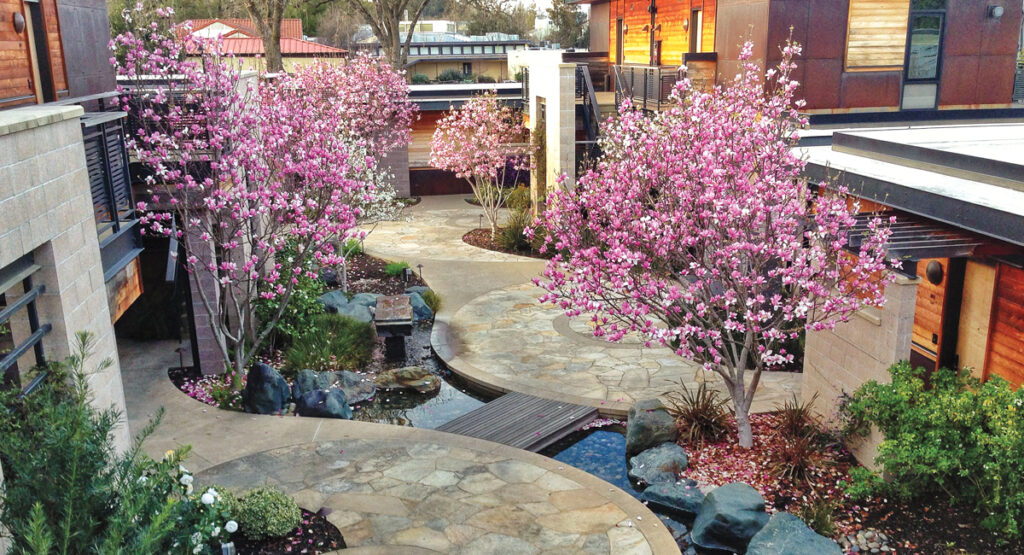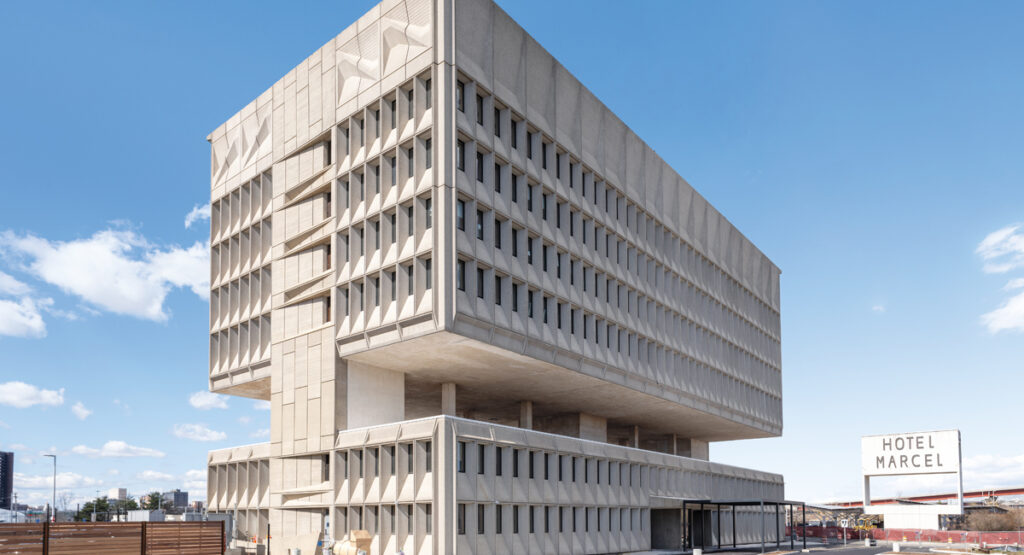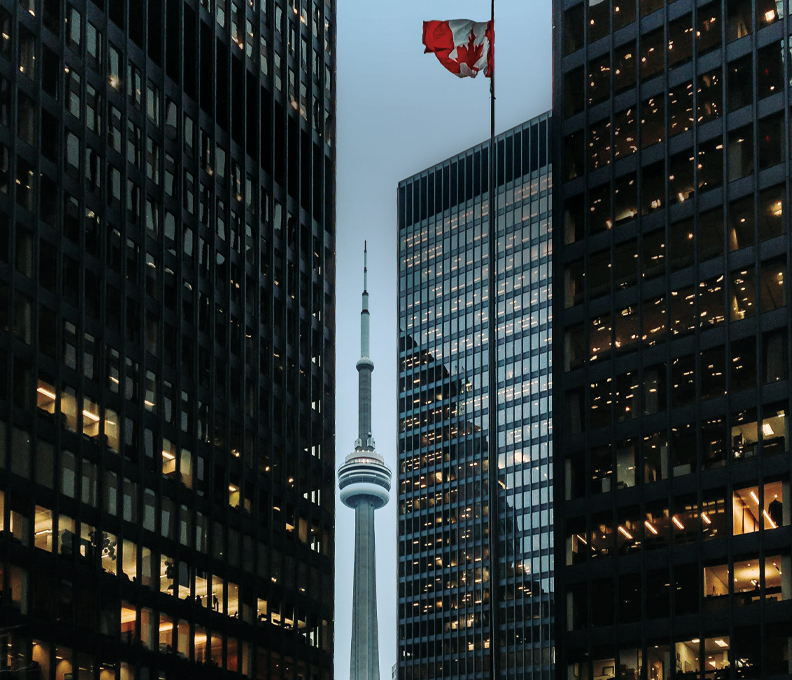How Hotels throughout the U.S. Are Combating Climate Change
Properties are switching to low-carbon concrete mixes, recycled building materials and other forward-thinking technologies
by Tom Austin
August 19, 2022

The hotel business is in the midst of what innovators call a “Tesla moment,” a period when the industry can either cling to outmoded and unsustainable operations—buildings can produce up to 45 percent of greenhouse emissions—or leap into the great green beyond of the 21st century, switching over to low-carbon concrete mixes, recycled building materials and forward-thinking technologies. Jeanne Gang of Studio Gang, a MacArthur “Genius Grant” recipient known for her sensitivity to the natural world, is ushering in the next generation of sustainable hotels with Denver’s Populus, scheduled to open next year. To offset the carbon produced during construction, the hotel is planting trees in 5,000 acres of forest.

h2hotel / Photo: Courtesy of h2hotel
Populus will also have a green roof terrace, in line with Denver’s Green Build-ings Ordinance. The extended lids of the room windows act as passive sunshades, and the distinctive window shapes echo Colorado’s aspen trees, with “dark, eye-shaped marks on the papery bark of their trunks.”
Across the United States, both new and old hotels have been doing their part to fight climate change. W San Francisco, one of the first LEED-EB (existing building) Platinum-certified buildings in America, keeps beehives on its 31st-floor roof and grows hydroponic plants for its kitchens. (Developed by the U.S. Green Building Council, LEED is short for Leadership in Energy and Environmental Design. Platinum certification is the highest level of environmental consciousness.)

Bardessono Hotel and Spa / Photo: Courtesy of Bardessono Hotel and Spa
In California Wine Country, Yountville’s Bardessono Hotel and Spa—also a LEED Platinum-certified property—uses geothermal wells to heat and cool the guest rooms. The h2hotel in Healdsburg, a LEED-NC (new construction) Gold-certified building, has an undulating green roof covered with native plantings, used to cool interiors, filter rainwater and promote biodiversity.
In Philadelphia, the Kimpton Hotel Palomar was the brand’s first property to earn LEED Gold certification, utilizing energy-efficient LED light bulbs and low-flow water systems. And the new Hotel Marcel New Haven, a Passive House-certified and net-zero carbon-energy property, has ratcheted up the future of the American hotel industry. Passive House certification means the LEED Platinum-certified hotel is entirely powered by solar energy. To achieve net-zero carbon-energy status, the Marcel—situated in a 1970 Connecticut office complex originally designed by Bauhaus leader Marcel Breuer—must function without fossil fuels.

Hotel Marcel New Haven, Connecticut / Photo: Andres Orozco
The Marcel, a Tapestry Collection by Hilton property, saves energy with triple-glazed windows, high-efficiency heat pumps and hygrothermal modeling software to thoroughly insulate the building. Direct-current power runs over Ethernet cables, also used for such data systems as remote-control lighting and window shades. Overall, the Marcel uses 80 percent less energy than traditionally constructed hotels. For developer and architect Bruce Redman Becker, a sustainable hotel was the only business option: “We are all responsible for confronting the climate crisis.”



